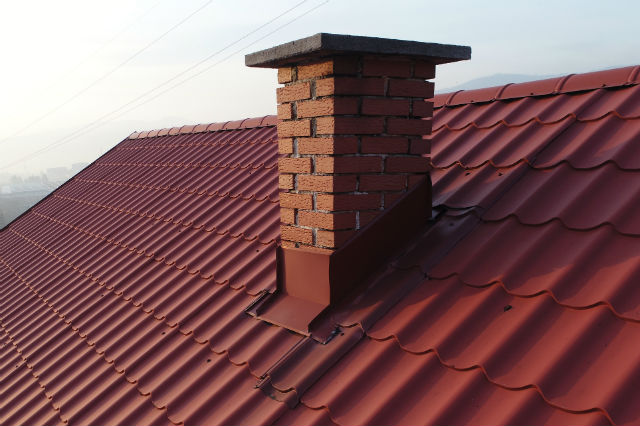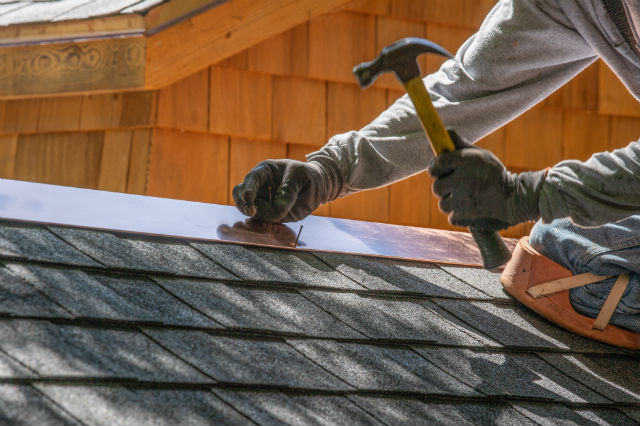Homeowners today have more roofing options than ever before, but one thing is certain: Replacing a roof is a pricey project. In fact, the average homeowner shells out more than $7,500 to put a new lid on their residence, according to the National Association of Realtors.
While there are ways to cut costs – including evaluating your roofing material options – you never want anyone but a professional roofer to do the work, even if it means a higher price tag, said Scott Richards, an Insurance Internal Sales Manager for AAA Northeast.
“This type of serious work should always be handled by a professional roofer, so you don’t encounter any problems later on,” Richards said, adding you should always ask for estimates from more than one reputable contractor before hiring someone to do the work.
If getting a new roof is on your to-do list, read on.
Understanding Your Roofing Options
You might not invite a friend over to see your new roof like you would a new kitchen but replacing an aging roof can vastly improve the value and safety of your home.
If done right, a new roof beautifies your home and can help keep heating and cooling costs down – as much as 15 percent, according to U.S. Environmental Protection Agency. Plus, a new roof helps protect your belongings from the damage water leaks and wind damage can wreak on your home.
As far as roofing material options go, asphalt shingles are the most cost-effective but have the shortest lifespan. Most warranties for asphalt shingles guarantee about 15 to 25 years.
Premium asphalt shingles, including so-called “architectural” shingles that add dimension to the look of your roof, often have a 20- to 30-year lifespan but can cost thousands more. Higher end products that can last up to 40 years and withstand hurricane speed winds are available, but they’ll cost you.
Other roofing material options include slate and cedar shakes, but both are quite expensive and are used less frequently.

Upgrades Worth the Money
Attics become like saunas in the summer if they are not properly ventilated and installing ridge vents along the roof during a roof replacement can help make sure yours is properly aired out. Plus, these vents are barely noticeable – and they can help cut your air condition costs too by preventing all that hot attic air from spilling into your home.
Another important item is eave flashing. Used on the overhangs, sides and ends, these often-metal building materials help form water-tight seals that protect your home from a wide range of weather conditions.
The next time you’re outside, look for any tree limbs that could eventually fall and damage your roof or cause moss or mold. Consider having them removed before you replace your roof to prevent unsightly damage.
If you’re considering solar panels to help lower your electricity bill, you may want to consider pairing it with your roof replacement – and sometimes that means waiting to put them on. If you put solar panels on and then need a roof replacement in a couple of years, you could wind up paying anywhere from $1,500 to $6,000 to have the panels removed and replaced.
While evaluating your roofing options, you may also want to replace your gutters, especially if they are dirty or misaligned. The National Association of Home Builders estimates the average life of galvanized steel gutters is 20 years – about the lifespan of a typical roof.
Most building codes allow for a homeowner to put a second layer of shingles over an existing layer to avoid having to pay for the labor associated with removing old shingles. However, adding a layer over an existing one can trap heat, which can damage the shingles and shorten a roof’s lifespan. It can also prevent you from adding hurricane straps – metal roof-to-wall connectors that can reinforce critical sections of the roof, especially important if you live in hurricane prone areas.
How Your Roofing Options Affect Your Insurance
Your roof can affect how much you pay for your homeowners insurance premium, Richards said, with its age and condition as the two most important factors.
Its shape is another factor, he said.
“If I had a flat roof, I would consider having a roofer put a pitch on it because it can make a big difference by preventing leaks and damage,” Richards said.
Many insurance providers offer discounts to homeowners who have replaced their home’s roof within the past two years, so if you plan on replacing yours, make sure you talk to your agent about it, he added.
You should also talk to your agent about how your new roof could affect the value of your home, Richards said. Your homeowners insurance is what helps you rebuild should disaster strike and you want to make sure it would pay you enough to do so if necessary.
Should you choose to put solar panels on your roof, do your research; many companies who lease solar panels will pay to insure them too.
Installing a new roof is one of the most expensive purchases a homeowner will make but doing it the right way can save you a whole bunch of money and prevent a bunch of headaches in the process.
Have you recently done a roofing renovation to your house? Tell us about it in the comments.
Learn more about AAA homeowners insurance or get a quote.
5 Thoughts on “Roofing Options to Update Your Home”
Leave A Comment
Comments are subject to moderation and may or may not be published at the editor’s discretion. Only comments that are relevant to the article and add value to the Your AAA community will be considered. Comments may be edited for clarity and length.














Can AAA cancel my roof insurance if my roof is over 26 years old and need minor repairs
I have recently put on a new roof with the higher end class 4 shingles . i know many insurance companys give a premium discount for this higher quality roof . does AAA also do this
Hi Ken, thanks for your question. I’ve forwarded your comment to one of our insurance specialists. You should be hearing from someone soon. -Marisa
Ken,
Did you ever get an answer about your upgraded roof?
Thanks
Interesting information regarding roofing costs, etc